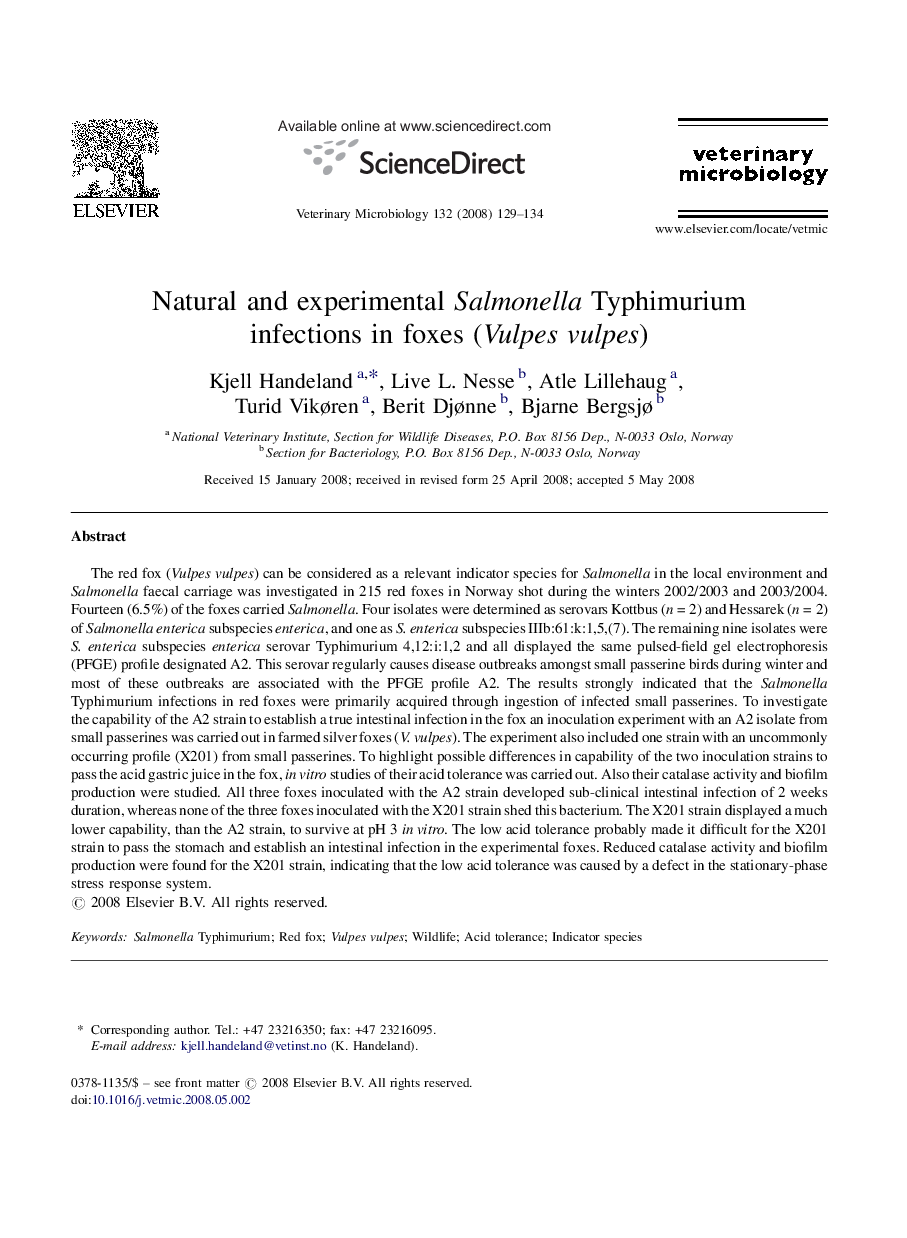| کد مقاله | کد نشریه | سال انتشار | مقاله انگلیسی | نسخه تمام متن |
|---|---|---|---|---|
| 2468728 | 1555434 | 2008 | 6 صفحه PDF | دانلود رایگان |

The red fox (Vulpes vulpes) can be considered as a relevant indicator species for Salmonella in the local environment and Salmonella faecal carriage was investigated in 215 red foxes in Norway shot during the winters 2002/2003 and 2003/2004. Fourteen (6.5%) of the foxes carried Salmonella. Four isolates were determined as serovars Kottbus (n = 2) and Hessarek (n = 2) of Salmonella enterica subspecies enterica, and one as S. enterica subspecies IIIb:61:k:1,5,(7). The remaining nine isolates were S. enterica subspecies enterica serovar Typhimurium 4,12:i:1,2 and all displayed the same pulsed-field gel electrophoresis (PFGE) profile designated A2. This serovar regularly causes disease outbreaks amongst small passerine birds during winter and most of these outbreaks are associated with the PFGE profile A2. The results strongly indicated that the Salmonella Typhimurium infections in red foxes were primarily acquired through ingestion of infected small passerines. To investigate the capability of the A2 strain to establish a true intestinal infection in the fox an inoculation experiment with an A2 isolate from small passerines was carried out in farmed silver foxes (V. vulpes). The experiment also included one strain with an uncommonly occurring profile (X201) from small passerines. To highlight possible differences in capability of the two inoculation strains to pass the acid gastric juice in the fox, in vitro studies of their acid tolerance was carried out. Also their catalase activity and biofilm production were studied. All three foxes inoculated with the A2 strain developed sub-clinical intestinal infection of 2 weeks duration, whereas none of the three foxes inoculated with the X201 strain shed this bacterium. The X201 strain displayed a much lower capability, than the A2 strain, to survive at pH 3 in vitro. The low acid tolerance probably made it difficult for the X201 strain to pass the stomach and establish an intestinal infection in the experimental foxes. Reduced catalase activity and biofilm production were found for the X201 strain, indicating that the low acid tolerance was caused by a defect in the stationary-phase stress response system.
Journal: Veterinary Microbiology - Volume 132, Issues 1–2, 25 November 2008, Pages 129–134